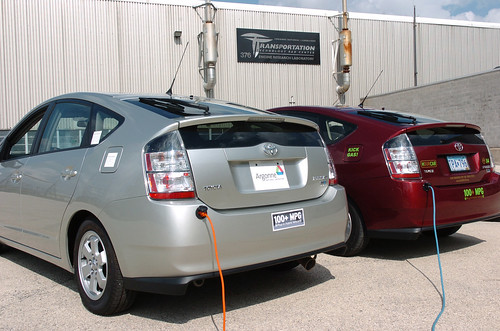Bernie’s Transportation Communications Newsletter (TCN) – July 19, 2010
Monday, July 19, 2010 – ISSN 1529-1057
AVIATION
1) Glitch of New Hijack Warning System Leads to Israeli Fighter Intercept of Ethiopian Airlines Flight
Link to article in Haaretz:
CAMERAS
2) New South Wales Mobile Speed Cameras Send ‘Security’ Info Back to Base
Link to article in TechWorld:
http://www.techworld.com.au/article/353601/mobile_speed_cameras_send_security_info_back_base
3) Speed Cameras: Good or Bad?
Link to story and audio report on American Public Media’s Marketplace:
http://marketplace.publicradio.org/display/web/2010/07/16/pm-speed-cameras-good-or-bad/
ELECTRONIC TOLLING
4) North Texas Tollway Authority Acknowledges Camera Problems, Vows to Boost Billing
Link to article in The Dallas Morning News:
GPS / NAVIGATION
5) GPS Warns of Red Light Cameras, but Database Isn’t Reliable
Link to McClatchy Newspapers review:
http://www.heraldnet.com/article/20100718/BIZ/707189971/1005
MARITIME
6) Inside the World’s Most Advanced Submarine
Link to CNET News blog:
http://news.cnet.com/8301-13772_3-20010868-52.html
7) COMSAR Initiates Global Maritime Distress and Safety System (GMDSS) Review
Link to article in IMO News:
http://www.imo.org/includes/blastDataOnly.asp/data_id%3D28953/IMO_News_No2_10_LOW.pdf (page 15)
PARKING
8) Pay-by-Phone Parking Tested in DC
Link to article in The Washington Post:
http://voices.washingtonpost.com/local-breaking-news/dc/pay-by-phone-parking-tested-in.html
PUBLIC INFORMATION / EDUCATION
9) Toyota Educates Customers as Floor Mat Alert Ignored
Link to Bloomberg article:
10) Montana Develops App for Driver’s Exam Practice
Link to AP article:
11) Failure to Bash
Former road industry publication editor recounts his experience dealing with FHWA PR staff.
Link to commentary in Better Roads:
http://www.betterroads.com/kirk-landers-16/
RAILROADS
12) Eurostar Launches First TV Spot in Three Years
Link to article and video on Brand Republic News:
http://www.brandrepublic.com/news/1016852/eurostar-launches-first-tv-spot-three-years/
ROADWAYS
13) Fixed Electronic Road Signs in New Zealand Will Not be Used to Warn Drivers About Ice
New Zealand Transport Agency says mobile warning signs are sufficient.
Link to article in The Nelson Mail:
http://www.stuff.co.nz/nelson-mail/news/3932761/Clash-over-Rai-ice-warnings
SAFETY / SECURITY
14) US Public Safety Officials to Kick Off Lobbying Blitz for Spectrum
Link to article on Nextgov:
http://www.nextgov.com/nextgov/ng_20100716_2547.php
15) US Customs to Promote Registered Traveler Program
Link to article in USA Today:
http://www.usatoday.com/travel/flights/2010-07-19-airportcheckin19_ST_N.htm
16) West Virginia Amber Alert Gets New Look
New logo designed to catch drivers’ attention on highway signs.
Link to story on WSAZ-TV:
http://www.wsaz.com/news/headlines/98750174.html
17) Mobile Mapping While Driving: Is It Risky?
Link to CNN story:
http://edition.cnn.com/2010/TECH/mobile/07/19/mapping.while.driving/#fbid=mO40HJ3Mn2C
18) Distracted Driving Solution Hits Market After 17 Years in Making
Link to article in Wireless Week:
TELEMATICS
19) Cross Country Provides Drivers Critical Info
Link to article in Highlands Today:
TRANSIT
20) DC Metro Seeks to Ease Congestion on Busy Bus Routes, Saving Time and Millions
Transit agency uses GPS data to identify slow zones for buses.
Link to article in The Washington Post:
http://www.washingtonpost.com/wp-dyn/content/article/2010/07/17/AR2010071702507.html
21) KSRTC to Introduce ITS for Mysore Public Transport
Link to Sify article:
22) Shield for Metro Near Chennai Airport to Prevent Interference with Radar Signals
Link to article in The Times of India:
TRAVELER INFORMATION / TRANSPORTATION MANAGEMENT
23) Wisconsin Company has Eye on Traffic so You Can Avoid Jams Ahead
Link to article in the Wisconsin State Journal:
http://host.madison.com/wsj/business/article_da73d316-9137-11df-9ed0-001cc4c002e0.html
Number of BlueTOAD Devices in Wisconsin is Growing
http://host.madison.com/article_5f634c7a-9136-11df-a1d1-001cc4c002e0.html
24) Driven to Distraction by Twits’ Signs
Motorists groups say message signs advertising traffic information on Twitter are a safety risk.
Link to article in The Scotsman:
http://news.scotsman.com/news/Driven-to-distraction-by-twits39.6426027.jp
25) Idaho 511 Expands to Include Bus Schedules
Link to video report on KBOI-TV:
http://apps.itd.idaho.gov/Apps/MediaManagerViewer/NewsClipping/Video.aspx?Id=1193
26) Clearwater, Florida Earns Patent for Device to Control Traffic Remotely
Link to article in the St. Petersburg Times:
27) ViaMichelin Launches Free iPhone Traffic App
Link to article in Tyres & Accessories:
http://www.tyrepress.com/News/business_area/e-Commerce/20034.html
VEHICLES
28) Subaru Outback to Double as Wi-Fi Hot Spot
Link to CNET blog:
http://reviews.cnet.com/8301-13746_7-20010774-48.html
News Releases
1) TrafficLand Adding Caltrans Los Angeles and Orange County Traffic Cameras to Its National Network
2) Santa Clara Valley Transportation Authority to Implement More Technology-Based Improvements
3) California’s MTC Invites Bay Area Residents to Shape Strategy for Expanding Public Involvement
Upcoming Events
2010 ITS Tri-Chapter Information Exchange Summit – August 18-19 – Gettysburg, Pennsylvania
Today in Transportation History
1985 **25th anniversary** US Vice President George H.W. Bush announced that Christa McAuliffe would become the first teacher, and the first private citizen, in fly in space.
http://www.presidency.ucsb.edu/ws/index.php?pid=38909
======================================================================
The Transportation Communications Newsletter is published electronically Monday through Friday.
To subscribe or unsubscribe, please visit:
http://groups.google.com/group/tcnl/subscribe
If you have any difficulties please contact me at bernie@bwcommunications.net.
TCN archives: http://groups.yahoo.com/group/transport-communications
Questions, comments about the TCN? Please write the editor, Bernie Wagenblast at bernie@bwcommunications.net.
© 2010 Bernie Wagenblast www.bwcommunications.net






![Reblog this post [with Zemanta]](http://img.zemanta.com/reblog_e.png?x-id=8402ca8d-f36e-4967-8f6a-405050c9e2c3)




